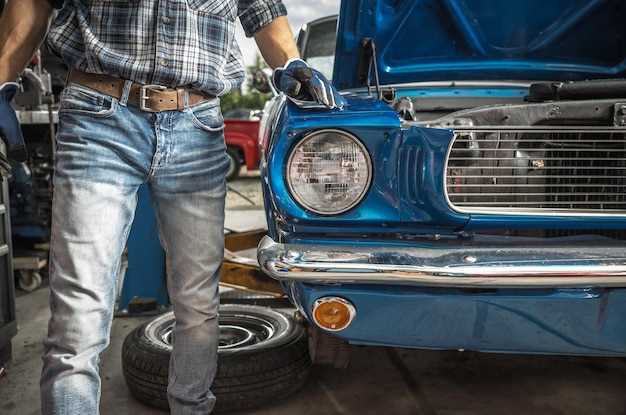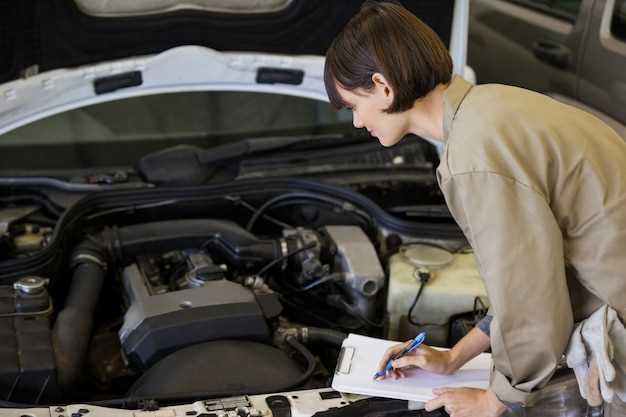
Purchasing a vintage car can be an exhilarating experience, filling the buyer with nostalgia and excitement about their potential new acquisition. However, before diving into the world of classic cars, it is crucial to conduct a thorough pre-purchase inspection. This guide is designed to equip prospective buyers with the necessary knowledge to ensure they make an informed decision when investing in a classic automobile.
Classic cars often exhibit unique charm and character, but they also come with their own set of challenges. A detailed pre-purchase inspection can help identify hidden issues that could lead to expensive repairs down the line. Understanding the specific areas that require scrutiny will empower buyers to negotiate better terms and avoid potential pitfalls.
In this guide, we will explore the essential steps to take during a pre-purchase inspection of vintage cars. From assessing the overall condition of the vehicle to scrutinizing its mechanical components, we will help you navigate this critical stage of the buying process. By the end, you’ll be well-prepared to make a confident purchase decision and enjoy your classic car for years to come.
Identifying Key Components During an Inspection

When considering a pre-purchase inspection of vintage cars, it is crucial to identify key components that may affect the vehicle’s performance and overall value. Start with the engine, checking for signs of wear, oil leaks, and unusual noises. A well-maintained engine typically reflects the care taken by previous owners.
Next, assess the transmission for smooth shifting and any fluid leaks. A meticulous inspection of the transmission can prevent costly repairs down the road. Pay attention to the brakes as well. Inspect the brake pads, rotors, and fluid levels, ensuring they meet safety standards for vintage vehicles.
Examine the suspension system, including shocks and struts, which are vital for ride quality. Look for rust or damage in the chassis and undercarriage, as these areas can indicate prolonged exposure to harsh conditions and compromise structural integrity.
Don’t neglect the electrical system. Test the battery, wiring, and all lights to ensure functionality. Vintage cars often have unique wiring setups, and any faults can lead to complications in ownership.
Finally, inspect the exterior and interior for paint quality, upholstery condition, and any signs of past repairs. Authentic vintage characteristics should be preserved, meaning that modifications could affect the car’s originality and market value.
Thoroughly checking these components will provide valuable insight into the vehicle’s condition and help make an informed decision before investing in a classic car.
Evaluating Mechanical and Electrical Systems
When considering the purchase of vintage cars, a thorough inspection of both mechanical and electrical systems is essential to ensure longevity and reliability. Start with the engine by checking for any signs of leaks, unusual noises, or smoke. Look for corrosion on components like belts and hoses, as these can indicate previous neglect.
The transmission should also be assessed for smooth shifting and fluid condition. A test drive can provide insight into its performance. Ensure the brakes, including pads, rotors, and fluid, are in good condition to guarantee safe operation. Don’t forget to inspect the suspension and steering systems for any wear or play.
Electrical systems are equally crucial. Verify that all lights, signals, and gauges are functional. Examine the wiring for signs of fraying or corrosion, as these can lead to more significant issues. The condition of the battery and alternator should also be checked; an old or weak battery can cause problems when starting your vintage car.
In summary, a comprehensive inspection of mechanical and electrical systems is vital for any potential classic car buyer. This diligence not only helps identify current issues but also aids in predicting future maintenance needs, ensuring a wise investment in vintage vehicles.
Assessing Documentation and Provenance

When considering the pre-purchase of a vintage car, assessing the documentation and provenance is crucial for ensuring a sound investment. Thoroughly examining the available paperwork can provide insights into the vehicle’s history, condition, and authenticity.
Start by verifying the car’s title. Ensure that it is clear and free of liens. A clear title not only confirms ownership but also protects against future legal issues. Additionally, check for any previous registrations and ensure they match the vehicle identification number (VIN). This helps establish whether the car has been involved in any accidents or had significant alterations that may not have been disclosed.
Service records play a vital role in understanding how well the car has been maintained over the years. Requesting detailed documentation of repairs, restorations, and routine maintenance can reveal the level of care the vehicle has received. This information is particularly important for vintage cars, where proper maintenance can significantly affect their performance and value.
Furthermore, provenance denotes the history of ownership and can enhance the car’s desirability. Investigate previous owners and any notable historical significance that may add value to the vehicle. Look for documentation that verifies the car’s participation in events, such as shows or races, as well as any awards won. These details contribute to the overall story of the car, adding to its appeal in the collector’s market.
Lastly, consider any accompanying certifications or appraisals from recognized experts. These documents can affirm the authenticity of the vehicle and its components, as well as provide an estimated market value. Proper documentation is not just paperwork; it is a testament to the car’s history and condition, making it an indispensable part of the pre-purchase inspection process.




